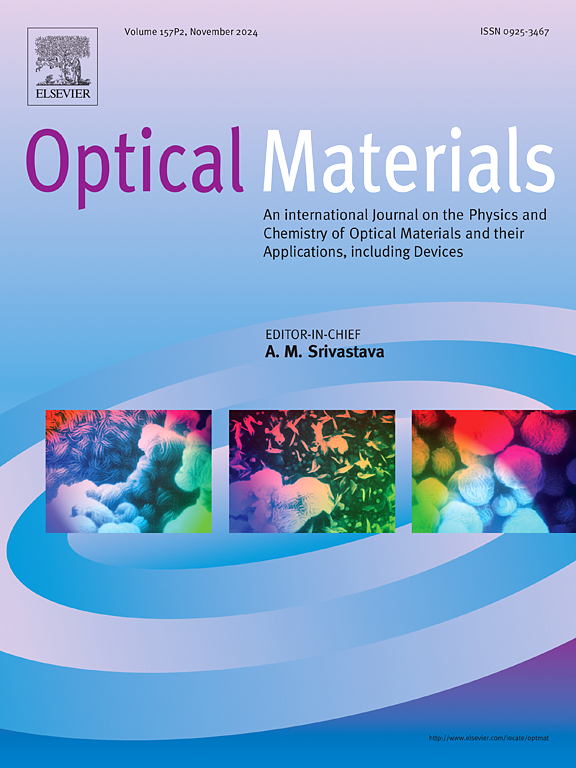稳定Pb(OH)Br:Cu红色荧光粉的水合成及其发光机理
IF 4.2
3区 材料科学
Q2 MATERIALS SCIENCE, MULTIDISCIPLINARY
引用次数: 0
摘要
发光材料以其前所未有的应用正在改变多个领域,使其成为前沿科学研究的突出领域。传统上,合成过程涉及有毒试剂,这些试剂容易降解并最终导致设备不稳定。在此,我们首次介绍了水合成Pb(OH)Br:Cu红色荧光粉,而不是使用有机溶剂,取得了出色的稳定性。即使在乙醇和去离子水中浸泡10天后,荧光粉的化学稳定性仍保持不变,发光强度几乎没有变化。根据第一性原理计算,Cu+的掺杂导致缺陷能级的引入和带隙宽度的显著减小,使电子在带边缘之间跃迁,并在紫外线激发下产生强红光。荧光粉通过带隙发射机制工作。我们的研究为高性能红色荧光粉的制备提供了一条绿色途径,大大减少了有机溶剂的使用和对环境的污染。本文章由计算机程序翻译,如有差异,请以英文原文为准。

Aqueous synthesis of stable Pb(OH)Br:Cu red phosphor with DFT insights into its luminescence mechanism
Luminescent materials are revolutionizing multiple fields with their unprecedented applications, making them a prominent area of cutting-edge scientific research. Traditionally, the synthesis process involves toxic reagents that are prone to degrade and eventually lead to device instability. Herein, we communicate for the first time the aqueous synthesis of Pb(OH)Br:Cu red phosphor instead of using organic solvents, achieving outstanding stability. The chemical stability of the phosphor remains intact with almost no change in its luminescence intensity, even after being soaked in ethanol and deionized water for ten days. According to first-principles calculations, the doping of Cu+ leads to the introduction of defect energy levels and a significant reduction in the bandgap width, enabling electron transitions between the band edges and generating strong red light under ultraviolet excitation. The phosphor operates through a bandgap emission mechanism. Our study provides a green approach for the fabrication of high-performance red phosphors, which significantly reduces the use of organic solvents and the pollution to the environment.
求助全文
通过发布文献求助,成功后即可免费获取论文全文。
去求助
来源期刊

Optical Materials
工程技术-材料科学:综合
CiteScore
6.60
自引率
12.80%
发文量
1265
审稿时长
38 days
期刊介绍:
Optical Materials has an open access mirror journal Optical Materials: X, sharing the same aims and scope, editorial team, submission system and rigorous peer review.
The purpose of Optical Materials is to provide a means of communication and technology transfer between researchers who are interested in materials for potential device applications. The journal publishes original papers and review articles on the design, synthesis, characterisation and applications of optical materials.
OPTICAL MATERIALS focuses on:
• Optical Properties of Material Systems;
• The Materials Aspects of Optical Phenomena;
• The Materials Aspects of Devices and Applications.
Authors can submit separate research elements describing their data to Data in Brief and methods to Methods X.
 求助内容:
求助内容: 应助结果提醒方式:
应助结果提醒方式:


